Adaptation
Adaptation is the process through which an organism becomes better suited to its environment in order to increase its chances of survival and reproduction. This can occur through physical changes, behavioral changes, or a combination of both.
Types of Adaptation
There are two main types of adaptation:
- Structural Adaptation: These are physical features of an organism's body that help it to survive in its environment. Examples include the long neck of a giraffe for reaching high leaves, the sharp claws of a tiger for hunting, or the thick fur of a polar bear for insulation in cold climates.
- Behavioral Adaptation: These are actions or behaviors that help an organism to survive. This could include hibernation, migration, or the way an animal builds its nest.
Examples of Adaptation
Here are some examples of adaptation in different organisms:
- Camouflage: Many animals have evolved colors and patterns that help them blend into their surroundings, making it easier to hide from predators or sneak up on prey.
- Migration: Birds and some animals migrate to warmer areas during the winter to find food and avoid harsh conditions.
- Desert Adaptations: Animals like the camel have adapted to store fat in their humps, which can be broken down into water and energy when needed in the arid desert environment.
Study Guide
Key Concepts
- What is adaptation?
- What are the two main types of adaptation?
- Provide examples of structural adaptation.
- Give examples of behavioral adaptation.
Review Questions
- How does adaptation help organisms survive?
- Explain the difference between structural and behavioral adaptation.
- Choose an animal and describe one of its adaptations and how it helps the animal survive.
By understanding adaptation, we can gain insight into the incredible ways in which organisms have evolved to thrive in diverse environments.
[Adaptation] Related Worksheets and Study Guides:
.◂Science Worksheets and Study Guides Fourth Grade. Ecosystems and changes in ecosystems
Study Guide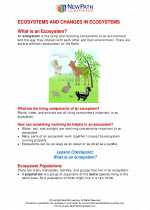 Ecosystems and changes in ecosystems
Ecosystems and changes in ecosystems  Worksheet/Answer key
Worksheet/Answer key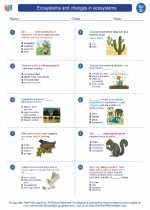 Ecosystems and changes in ecosystems
Ecosystems and changes in ecosystems  Worksheet/Answer key
Worksheet/Answer key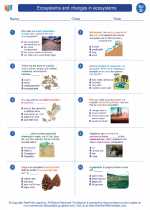 Ecosystems and changes in ecosystems
Ecosystems and changes in ecosystems  Worksheet/Answer key
Worksheet/Answer key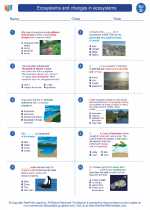 Ecosystems and changes in ecosystems
Ecosystems and changes in ecosystems  Vocabulary/Answer key
Vocabulary/Answer key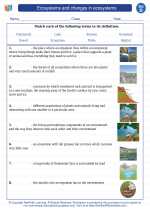 Ecosystems and changes in ecosystems
Ecosystems and changes in ecosystems  Vocabulary/Answer key
Vocabulary/Answer key Ecosystems and changes in ecosystems
Ecosystems and changes in ecosystems  Vocabulary/Answer key
Vocabulary/Answer key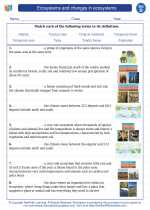 Ecosystems and changes in ecosystems
Ecosystems and changes in ecosystems 

 Worksheet/Answer key
Worksheet/Answer key
 Worksheet/Answer key
Worksheet/Answer key
 Worksheet/Answer key
Worksheet/Answer key
 Vocabulary/Answer key
Vocabulary/Answer key
 Vocabulary/Answer key
Vocabulary/Answer key
 Vocabulary/Answer key
Vocabulary/Answer key

The resources above cover the following skills:
Life Science
There is interaction and interdependence between and among living and nonliving components of ecosystems. Students can:
Identify the components that make a habitat type unique
Compare and contrast different habitat types